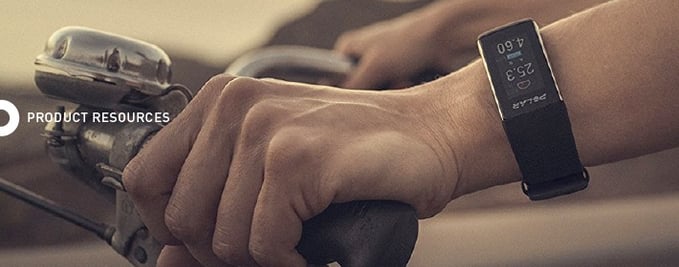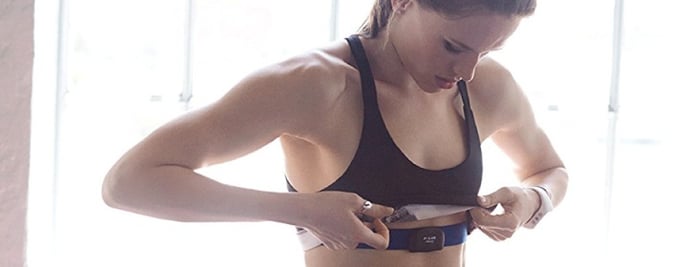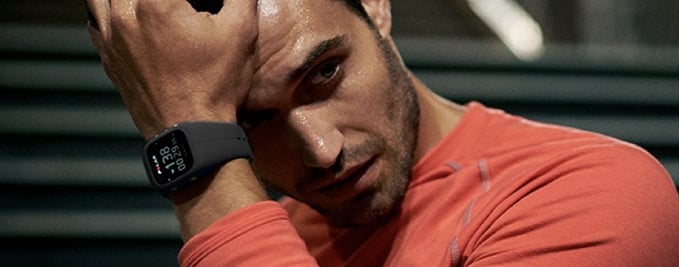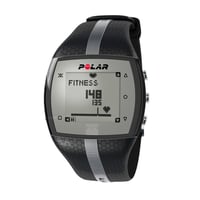How to Choose and Use Heart Rate Monitors

As we learn more about the human body and physical fitness, we are finding out it is not the length of exercise sessions that matter so much as the intensity of the workout. This means it might not be prudent to put your body through a demanding workout like a marathon. Rather, studies show it is important to reach and maintain an elevated heart rate for at least a few minutes several times per week. A heart rate monitor will help you determine if you have achieved the desired heart rate. These devices can even instruct you to slow down or speed up to obtain the results you are looking for.

Who Should use a Heart Rate Monitor?
The simple answer to this question is “everyone”. However, some people do not exercise. Others are willing to exercise but do not have an interest in setting goals. Those who run should be especially interested in heart rate monitoring. This device helps runners stay in their peak target zone on those especially challenging training sessions. It will also help keep you at the aerobic base when engaging in comparably easy workouts.
Those who walk and jog will also benefit from a heart rate monitor. It does not matter if you power walk, take a slow stroll around the block or jog at a brisk pace. The bottom line is you will obtain meaningful insights about your condition and performance by wearing a heart rate monitor. Tap into the power of this little device and you will be able to strive toward zones for fat-burning and aerobic activity just like those who go as hard as they can when working out. The same is true for those who enjoy bicycling. A heart rate monitor will gauge cycling performance including stamina, interval rides, tempo and beyond. Even a climber, hiker or skier will benefit from a heart rate monitor as it will help condition them to reach a peak ascent.
If you are like most people, you are looking for a way to lose weight. Strap on a heart rate monitor, start working out and you will have all the information you need to gauge the efficacy of your exercise sessions. This nifty little device will display everything from the number of calories you have burned during physical activity to the exercise target required for optimal fat burning. Finally, those who have been injured and are now participating in rehab will find a heart rate monitor quite valuable. Even those attempting to bounce back from an illness should give this device a try. The data it tracks and presents will prove quite helpful in the recovery effort.

Heart Rate Monitor Types
The typical monitor has a sensor positioned on the wrist or chest strap. Monitors that have chest straps tend to be more accurate than the wrist variety. However, some prefer the wrist heart rate monitor for its convenience. There is no need to mess around with any type of chest strap prior to a workout. Simply slap it on your wrist and start moving. This wrist-based type has an optical sensor built within the watchband or even the case back to detect the user's pulse. The chest-strap heart rate monitor places the wireless sensor in a position to detect the user's pulse electronically. This information is then sent to a receiver on the wrist that shows the user's heart rate.
Features
Today's heart rate monitors are sophisticated to the point that they do some pretty incredible things that seem straight out of a science fiction novel. Simply displaying the wearer's heart rate is no longer enough to win market share. The latest and greatest heart rate monitors provide high, low, continuous and average heart rate data achieved during the workout. Certain models can even function with a special foot pod that connects to the shoelaces to monitor speed, miles covered and even pace. Some heart rate monitor models are equipped with built-in GPS to track distance and elevation.

Heart Rate Target Zones
One of the primary benefits of heart rate monitors is they allow the wearer to reach and stay within the optimal target zone in terms of heart beats per minute. Set your nuanced goals and your monitor will make it that much easier to reach them. The high-end models provide such information with a digital display or a tone. The target zone is the percentage rate according to the maximum heart rate. An array of algorithms have been created to determine the max estimate for heart rate. In general, the heart rate maximum is determined by subtracting one's age from 220.
Basic heart rate monitors offer upwards of three target zones. The more costly models provide upwards of half a dozen target zones. It is possible to pre-program the heart rate monitor for several different workouts from the anaerobic variety to aerobic, endurance and beyond. If the heart rate monitor has one target zone, it will be necessary to reset it each time you alter your exercise expectations. Select your heart rate monitor carefully to prevent this annoyance.
Sport Watch and Stopwatch Monitors
Some heart rate monitor models have sport watch features like a timer, calendar and alarm. It is even possible to set lap and split times. Following each lap ran at a track or each mile covered on a marked race course, the user can press the lap button to gauge the alteration of pace across the entirety of the workout.
Monitoring Speed and Distance
Today's heart rate monitors are capable of determining the distance you cover in an exercise session and the speed at which that distances was covered. This is accomplished with GPS and a foot pod for indoor environments. It is accomplished in outdoor environments with the assistance of satellite reception.

Heart Rate Monitors can Even Connect to Smartphones
The digital interface of your heart rate monitor makes it possible to connect to your smartphone or a computer. This connectivity allows for the downloading of training statistics for storage, sharing or evaluation. This data can be transferred over a wireless connection or the traditional wired variety. In fact, it is possible to tether the heart rate monitor to the smartphone. This permits wrist-top control for phone functionality like fitness apps, text messages, push notifications, songs and even social media. This can all be accomplished without removing your smartphone from your pocket.
Recovery Heart Rate
Some heart rate monitors have a recovery heart rate mode that tracks the amount of time required for the heart to return to a normal rate. This is an indication of cardiovascular health. It is particularly important if you participate in HIIT (high intensity interval training) or sprints.
Additional Heart Rate Monitor Features of Note

Wouldn't it be nice to find out how many calories you burn during exercise? It is possible with a heart rate monitor's calorie counter. This feature is especially helpful if the workout is a component of a weight loss program. Some monitors feature a “time in target zone” capability to gauge the amount of time spent working out in the target zone selected by the wearer. Certain goals/zones will take up plenty of time while others won't.
Related Content:
Empower your staff and reassure your community with our FREE downloadable cleaning and disinfecting guides for fitness centers, educational settings, hospitality facilities and more.
Topics from this blog: Product Resources
Back


